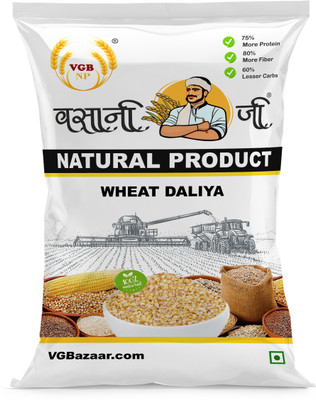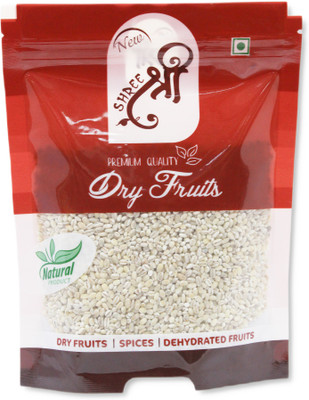

Freedom Sale ends in07 hrs : 19 mins : 28 secs
VAMSY ORGANICS Foxtail millet,,kangni,Kakum,Rala,Thinai,Korra,Navane,Thina Foxtail Millet (1 kg)
Price: Not Available
Currently Unavailable
Description
Foxtail millet is an absolutely great substitute to rice as it keeps you satiated for longer hours. The trick is to consume cooked foxtail millet instead of rice in order to prevent those mid-day hunger pangs and avoid sudden spike in sugar levels. Being a low glycaemic index food (50.8), it is an ultimate choice to help reduce blood sugars and Glycosylated haemoglobin. HOW TO COOK FOXTAIL MILLET? There are a few ways to get the most out of cooking foxtail millet seed- 1. Soak before using- Soak the millet in 3-4 times the amount of water or at least 6 hours, swishing your fingers through the bowl or swirling it before straining until the water runs clear. Soaking the millet overnight ensures that you break down the phytic acid which is responsible for impairing nutrient absorption. 2. If not soaking, toast- While some cooks prefer to wash their millet, some don’t – and in that case, you can toast the millet in a sauté’ pan before you start cooking to bring out a subtle level of nuttiness to their flavour profile. 3. Add more liquid to change the texture- You can also prepare foxtail millet with a lighter, looser texture similar to couscous or make it into a porridge. Use 2:1 ratio of water to millet. 4. Pressure Cook- Soak Foxtail millet in water and then pressure cook for couple of whistles. Once cooked, the millets should be grainy. Use 2:1 ratio of water to millet for fluffy texture and 3:1 ratio for a softer consistency. 5. The boiled millet can be served with Dal, curry or chutney/pickle. 6. U can add boiled millet with vegetable stir-fry The healthy Take-a-way- Foxtail millet, like the other millets is a powerhouse of nutrition. In this fast pace life, growing pollution and chemically sprayed vegetables, it is high time we bring changes to our regular diet to get immunity against communicable and non- communicable diseases. Encourage your locally grown seasonal grains to inherit immunity. Hence, foxtail millet is one such local grain cannot ignore
Read More
Specifications
In The Box
| Pack of |
|
| Sales Package |
|
General
| Brand |
|
| Model Name |
|
| Type |
|
| Quantity |
|
| Maximum Shelf Life |
|
| Is Perishable |
|
| Organic |
|
| Dietary Preference |
|
| Polished |
|
| Container Type |
|
| Regional Speciality |
|
| Manufactured By |
|
| Nutrient Content |
|
| Net Quantity |
|
| FSSAI Number |
|
| Ingredients |
|
Additional Features
| Key Features |
|
Dimensions
| Height |
|
| Width |
|
| Depth |
|
| Weight |
|
Legal Disclaimer
|
Ratings & Reviews
4.8
★
9 Ratings &
0 Reviews
- 5★
- 4★
- 3★
- 2★
- 1★
- 7
- 2
- 0
- 0
- 0
Have you used this product? Be the first to review!
Be the first to ask about this product
Safe and Secure Payments.Easy returns.100% Authentic products.
Back to top












